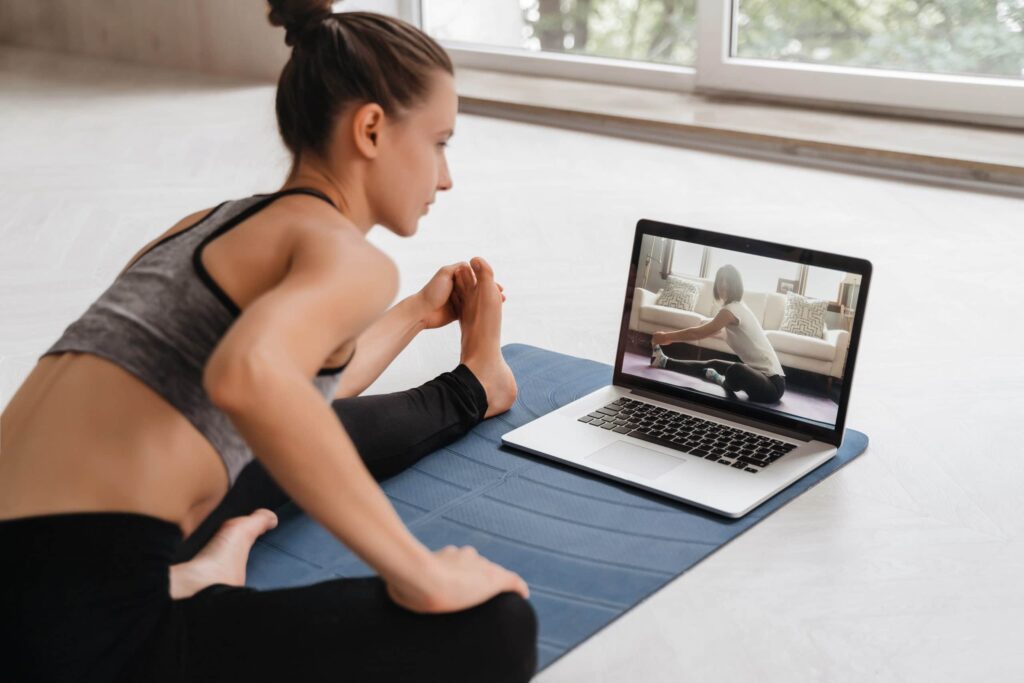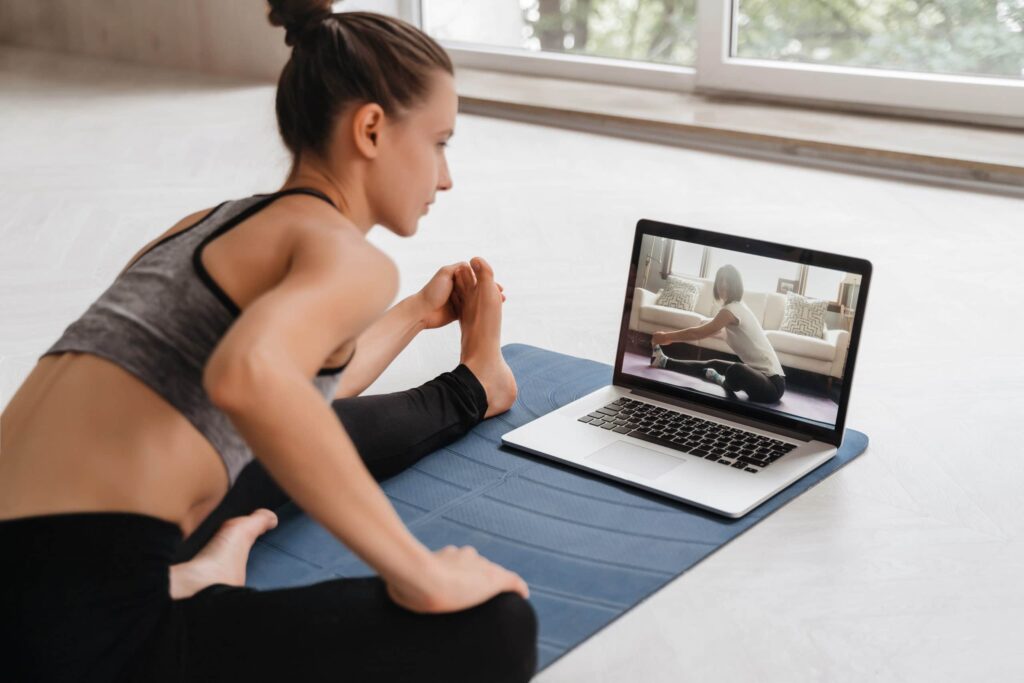Virtual physical therapy is an innovative type of therapy that uses computer graphics and motion-tracking technology to replicate the real-world movements of a patient. This type of therapy can help patients with chronic pain, injury, and even mental health issues by providing them with relief from their symptoms. There are many benefits to using virtual physical therapy, including the fact that it is affordable and can be used on a wide range of patients. Additionally, virtual physical therapy can be used in combination with other therapies, such as acupuncture or massage, to provide even more relief. In this blog, we will learn all about virtual physical therapy and its benefits.
Contents
What is Virtual Physical Therapy?
Virtual Physical Therapy (VPT) is a relatively new form of physical therapy that uses computer-generated images and simulated environments to help patients recover from injuries. VPT is often used in cases where traditional methods of physical therapy are not effective or would be too uncomfortable for the patient.
The idea behind VPT is that it allows patients to improve their strength, flexibility, and movement while still being safely supervised by a therapist. This type of therapy is an effective way to treat a variety of injuries, including those that have not responded well to other forms of treatment.
One of the biggest benefits of VPT is that it can be used in almost any setting. This makes it perfect for patients who are unable to travel or participate in traditional rehabilitation programs. Additionally, VPT can be used as a standalone treatment option or in conjunction with other therapies such as acupuncture or massage.
Several companies offer VPT services, and the therapy is growing in popularity. There are also several virtual reality (VR) applications that can be used to simulate the experience of PVT.
How Does Virtual Physical Therapy Work?

Virtual physical therapy (VPT) is a type of therapy that uses digital technology to help patients recover from injuries. Patients use special devices to control their bodies in virtual environments, which helps them learn how to move and function properly. VPT can help people with injuries such as lower back pain, knee pain, and shoulder pain. Patients can also use VPT to improve their flexibility and balance.
The working of VPT is based on the theory of neuroplasticity. Neuroplasticity is the ability of the brain to change and adapt over time. This theory states that by using VPT, patients can improve their physical abilities and nerve function. Researchers believe that VPT can help patients recover from injuries faster and more effectively than traditional therapies.
Throughout the working of VPT, the patient is fitted with a special device. This device is attached to the patient’s skin and uses sensors to track the patient’s movements. The software then creates a virtual environment that mirrors the patient’s movements. The patient can explore this environment and learn how to move correctly.
There are two main types of VPT: manual therapy and interactive rehabilitation. Manual therapy is when the therapist uses their hands to help the patient recover from an injury. Interactive rehabilitation is when the therapist uses digital technology to help the patient recover from an injury.
Early studies have shown that VPT is effective in treating injuries. In one study, patients who used VPT for back pain recovered faster than those who used traditional therapies. In addition, VPT was found to be more effective than manual therapy in treating knee and shoulder injuries.
Types of Services In Virtual Physical Therapy

Virtual Physical Therapy (VPT) is a type of therapy that uses virtual reality to simulate the physical environment of an injury. Patients can use this technology to improve their rehabilitation and restore functionality. There are several types of VPT, including:
Rehabilitation VPT
Rehabilitation is a type of VPT that helps a patient return to their pre-injury level of physical ability. Also, Rehabilitation VPT can be used for a variety of conditions, including post-surgery rehab, recovery from an injury or illness, and arthritis management. It is often combined with traditional physical therapy treatments to help the patient reach the desired level of functionality.
Rehabilitation VPT uses virtual reality technology to create an environment that mimics real-life scenarios and activities. This allows patients to practice functional movements in a safe and controlled environment. It also provides feedback on how well they are performing certain tasks so that therapists can customize treatment plans accordingly.
Exercise VPT
Exercise VPT is similar to rehabilitation but focuses more on increasing a patient’s strength and endurance. This type of VPT can be used to help with physical conditions such as back pain, muscle weakness, or joint immobility. Exercises range from simple stretching and strengthening exercises to more complex activities, such as balance and agility drills.
Performance-Based VPT
Performance-based Virtual Physical Therapy is a type of therapy that helps athletes improve their performance in sports by using virtual reality technology. This type of VPT involves simulating sports activities while the athlete wears a VR headset. The software tracks the movements of the athlete and provides feedback on how they can improve their skills. It also allows therapists to customize exercises for individual athletes so that they can reach their full potential.
Pre-Surgical VPT
One of the most significant uses of Virtual Physical Therapy (VPT) is pre-surgical rehabilitation. This type of therapy provides patients with personalized exercises that have been designed to help them prepare for their upcoming surgery and encourages them to maintain a healthy lifestyle before their procedure. Through VPT, individuals can access specific information about their condition and learn valuable strategies for managing pain, avoiding injury, and being proactive in recovery. By completing these exercises before surgery, patients can reduce the risk of postoperative complications and increase their chances of successful outcomes.
Benefits of Virtual Physical Therapy
Virtual physical therapy is just as effective as traditional physical therapy for treating patients with chronic pain. A recent study found that virtual physical therapy was just as good as traditional physical therapy at improving pain and function in patients with knee osteoarthritis.
Virtual physical therapy is a type of treatment that uses computer-generated images to help patients rehab their injuries. This type of therapy is perfect for patients who can’t travel to see a therapist in person.
Patients can complete virtual physical therapy treatments at home, which means they can still manage their day-to-day responsibilities while receiving treatment. Virtual physical therapists use specialized software to create precise digital copies of the patient’s body. This allows the therapist to help injured areas move and improve functionality.
Another benefit of virtual physical therapy is that it can be used in conjunction with other treatments, such as exercise and compression therapies. This helps speed up the healing process and reduces the risk of injuries occurring later on down the line.
Virtual physical therapy is an extremely cost-effective treatment option. A recent study found that virtual physical therapy was just as effective as traditional physical therapy at reducing pain and improving function in patients with knee osteoarthritis.
Potential Health Risks Associated with Virtual Physical Therapy

Also with benefits, come risks that are associated with virtual physical therapy. As with any form of medical treatment, there is always the possibility of complications and adverse effects. While most common complaints include soreness or excessive fatigue, there have been reports of more serious injuries such as muscle tears, joint pains, and ligament damage.
Moreover, patients tend to ignore symptoms of illness because they presume that virtual PT should take care of everything. Hence proper assessment must be done before setting up a course of action to make sure that no unforeseen problems occur during the treatment process.
Additionally, reliance on virtual physical therapists can lead to isolation since they cannot provide social support like face-to-face contact with other individuals going through similar experiences. This could potentially harm the mental well being especially for those with underlying issues such as anxiety or depression.
Lastly, there is a lack of regulation in this relatively new field which could increase the risk of patients receiving inadequate care from untrained virtual physical therapists. It is therefore important to make sure that any virtual PT provider you choose has been certified and can provide quality services.
Conclusion
Virtual physical therapy (VPT) is a growing trend in the world of health and medicine. It’s a type of therapy that uses computer-generated images and movements to help people who are injured or have problems with their mobility recover at a faster pace. VPT is an effective way of helping patients rehab at home, as well as providing them with opportunities for continuing rehabilitation even when they can’t leave the house. If you’re interested in trying virtual physical therapy, visit us for help.
Physical Therapy help patients recover from pain. If you’re experiencing Back pain, Shoulder pain, Knee pain, Neck pain, Elbow pain, Hip pain, or Arthritis pain, a physical therapist at MantraCare can help: Book a physiotherapy session.


